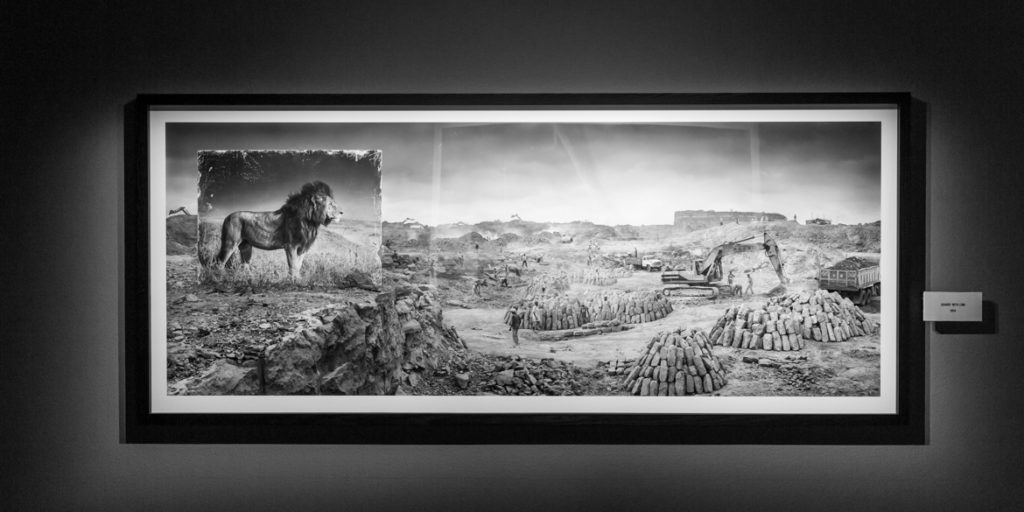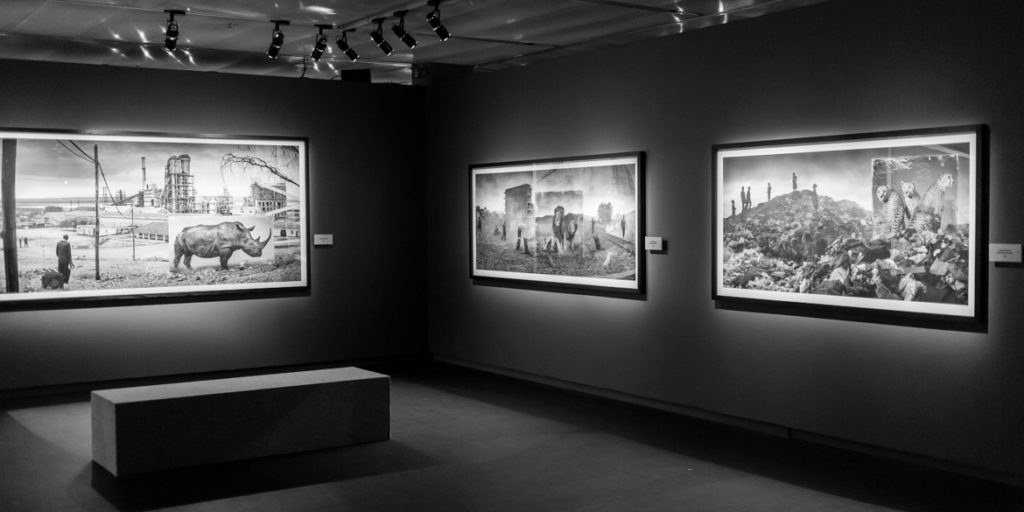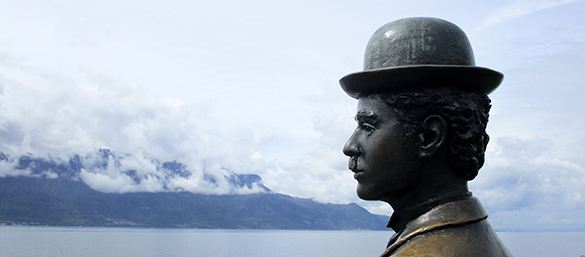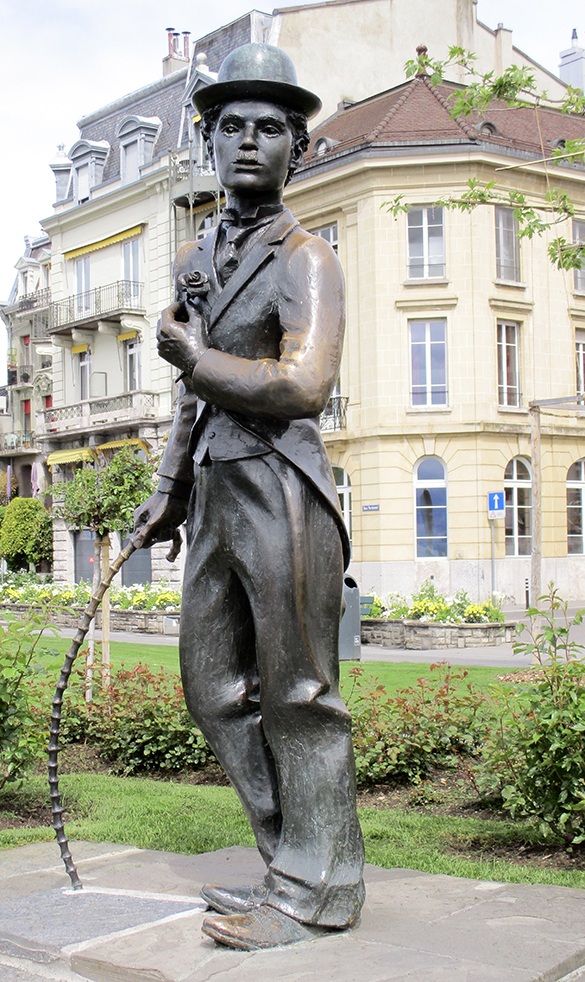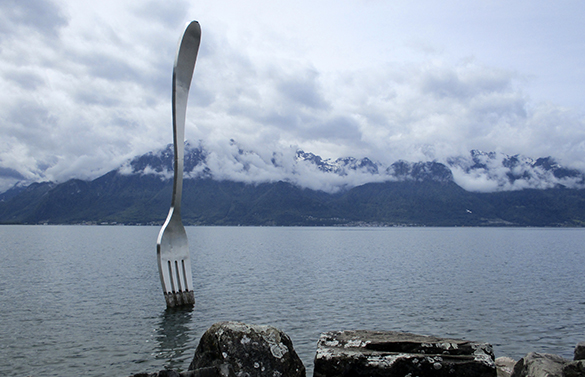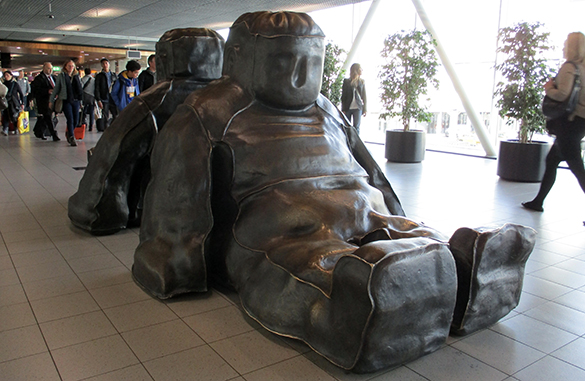I’m in Stockholm and have the afternoon off. Facebook tells me there’s a new exhibition by British photographer Nick Brandt at Fotografiska. I’ve seen his wildlife photos before, but I have never seen anything like his news series, “Inherit the Dust.”
Brandt has developed life-size prints of his fantastic animal portraits, glued them to huge aluminium and plywood panels, and carefully placed these in polluted, abused and dystopian parts of Africa, where animals once roamed freely and lived in harmony.
The panels were left long enough for the inhabitants to stop paying attention to them, after which Brandt captured the scenes as black-and-white panoramas through the lens of his medium-format Mamiya RZ67 Pro ll.
The most poignant panorama shows a family of elephants beneath a road, next to a group of homeless and glue-sniffing kids, juxtaposed to a billboard (in the horizon) of a man relaxing in a park with the text “lean back, your life is on track.”
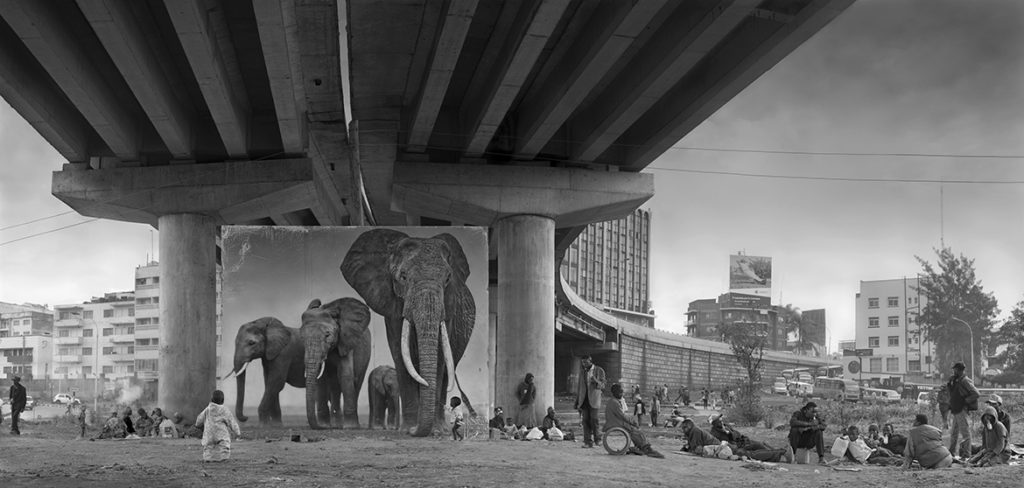
“Underpass with elephants (lean back, your life is on track).” inheritthedust.nickbrandt.com
Brandt’s “ghost animals” are a stark reminder of what poaching, climate change and capitalism actually put at stake here. Together with the marginalised, poor people living in these places, they are the victims of our destruction of nature.
I buy a copy of Brandt’s book, make a donation to the Big Life Foundation and leave the exhibition feeling embarrassed and hopeless. I wish that parents bring their kids to Fotografiska. They need to see this now, and I bet you: they don’t want to inherit the dust.

